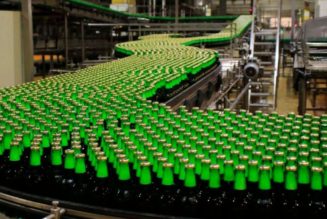Boss Talk
Paul Russo on KCB clean-up and busting ghosts of bad loans
Friday September 01 2023

Paul Russo is the KCB Group chief executive. ILLUSTRATION | JOSEPH BARASA | NMG
Paul Russo became the KCB Group chief executive on May 25 last year after the exit of Joshua Oigara. He spoke with the Business Daily to dissect the half-year performance and the key issues he has had to confront.
Mr Russo talks about his leadership style and reflects on the boldness of taking big decisions like downgrading legacy debts, settling huge court claims and writing off some loans.
KCB posted a 22 percent jump in revenue to Sh73 billion. But tied to this revenue was a growth in operating costs that eventually cut half-year profit. What was at play here?
There were inherited legacy loans and legal claims to deal with. We also carried out a staff restructuring programme.
Also, when you look at the expenses year-on-year, costs from the Trust Merchant Bank (acquired in December 2022), were not there.
The cost for the staff voluntary exit programme was Sh1.5 billion and over Sh2.3 billion went to legal claims. We also wrote off loans worth Sh10 billion and increased loan loss provisioning. These events as well as the annual salary increment drove up costs.
On the Sh2.3 billion court award against the National Bank of Kenya, you were confident of reversing it and had not made any provision for it as of the end of last year. Is there anything your legal team overlooked?
No. You can be confident about your case but unfortunately, you don’t decide on it. At a personal level, I do not agree with the outcome but I live with the outcome because there is an entity that is mandated to make those decisions and it has made the call. We live with the consequences. That was significant.
You carried out a voluntary staff exit programme that impacted about 400 employees but still grew your headcount by 779 in six months. What was happening here?
There are many reasons organisations run voluntary early exit schemes. This was not about cutting headcount. KCB Kenya has, for example, been hiring IT resources. We have brought in close to 250 IT specialists to support Kenya and group operations.
So, headcount was going to grow, especially since we have opened close to 10 new branches. But then there are staff who say ‘Allow us to drop off from the bus’ and you have to open that window for voluntary leavers, not to reduce staff costs but to refresh the team.
Non-performing loans (NPLs) continue to rise in the banking sector and KCB has not been an exception. You wrote off Sh10 billion loans, downgraded Sh34 billion loans and increased the provisioning for NPLs by 2.4 times to Sh10.2 billion. What’s happening in this space?
One thing I said to you earlier was that I was going to clean up KCB Bank Kenya. So this is just part of the promise that I made, to take the tough calls. People can give you the benefit of the doubt in the first year if you make the right calls.
This report marks the end of my first year and I think we have made the tough calls within this period with the support from the board.
You used the term ‘inherited legacy’ loans and legal claims. How far back have you gone in addressing historical issues, especially on loans?
The Sh34 billion downgraded loans have been in our books for more than five years. It takes boldness to make that call and downgrade Sh34 billion and write off another Sh10 billion.
You need to lighten the organisation. KCB Bank Kenya is generating top revenues for the group and if you defer taking those hits, you are creating a drag.
What injures an organisation is decisions. Those decisions are made by human beings. One must do the right thing so that if today I am not here and another person takes over, what they are picking is the right position. We have to implement the expected credit loss to the letter.
What does it take to make such tough calls in a very competitive industry given you’re relatively new in this position and many people may be observing and saying ‘KCB profits are falling because Paul took over’?
I can as well be in the streets but let me first have a cup of tea with you without feeling any guilt of having done the wrong thing.
That is very important to me. Don’t carry the new managing director syndrome that wants to post good numbers for the sake of it.
We have to confront the waste on our cost model and the credit losses. You must be bullish and say this is the quantum because if you continue kicking the can down the road, it becomes your problem.
In making such big calls, were you never afraid that people would start doubting your leadership and your vision?
The fundamentals must be right but you are also confronting what is not right because how can I assure you of a good 2024 if I will be springing surprises on the way?
If I do so, it will start becoming my problem. You better be doubted once and be crucified within a given window and then you start having meaningful conversations.
Whatever you do, you will be doubted. Whatever you do, something bad will be said about you. But just do the right thing.
What does it mean for KCB Kenya to have its own boss as opposed to the group CEO being also in charge of this unit?
We have already made KCB Kenya like any other subsidiary as opposed to in the past when it was run by the KCB Group CEO. So I am holding KCB Kenya at the same level of standard as I do any other subsidiary.
In the past, if there was a question about KCB Bank Kenya that I wanted to ask, I would have had to ask myself and it is always human to be softer to yourself.
It is a governance issue as well as a performance issue. The new structure allows hard conversations between the group and a subsidiary.
KCB’s NPLs ratio in specific sectors such as manufacturing (24.8 percent), real estate (16 percent) personal and household (14.2 percent) and even trade (12 percent) are quite high. Any specific problems here?
There is a credit loss at every stage. If you don’t take the loss in the month that you are supposed to, it will build up.
You have better distribution and cushion if you are taking it upfront rather than when you are coming in to clean because you will be taking a quantum and this is painful.
The problem with cleanup is that you are taking it in bulk with a rearview mirror.
If your model is right and you are taking the hit the way the model is telling you, you will not get these surprises.
Part of the build-up of NPLs in the sector has been linked to government pending bills. Is KCB witnessing the same from borrowers who have done business with government and has this changed the banks’ view of people and businesses doing business with government?
You have to do business with government but you must do so with all your eyes open and if you ever sleep, you must do so with one eye open.
That is what we are asked of. We have struggled with contractors but it is not a KCB problem but a sector one.
You have to sharpen your lens when the government is involved. You must have your eyes open and risk mitigation measures must be clear.
You have to be ruthless with the way you carry out approvals while observing what is in the Public Finance Management Act. There is no shortcut. And you must have the discipline to walk away from some deals.
When tall trees fall, sometimes they go down with the short trees that have not caused the tall ones to fall. So you got to risk-manage your book.
KCB has not declared an interim dividend this half year. This is the same case as with last year. Has the group changed its policy on dividend payment?
We have not changed our policy. That policy remains but it is a live policy and at the end of the day you make decisions based on the performance and the circumstances.









